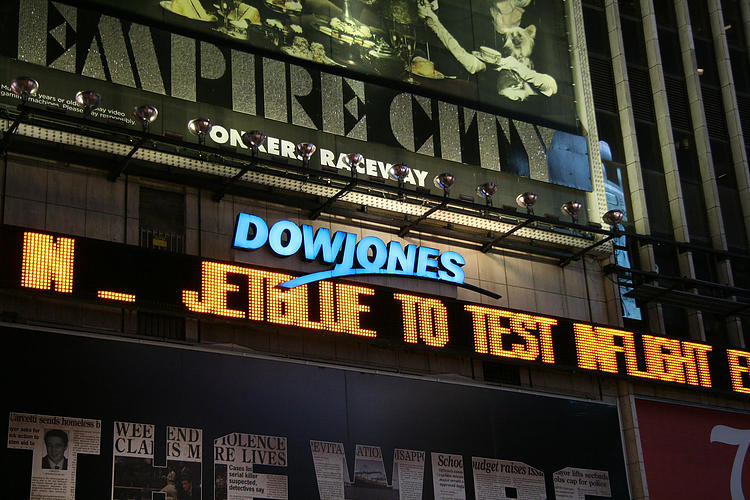On Friday, the Dow Jones gave its investors something to cheer about, adding another 400 points to its tally. It’s clear the index has regained its footing after a small slump, and we’re seeing a resurgence in the post-election rally. Interestingly, it seems investors are shifting their focus from tech to consumer goods.
The Dow Jones Industrial Average (DJIA) has played a strong hand, turning around its earlier midweek struggle into a solid performance by the end of the week. This means the Dow is closing out the week on a positive note, climbing about 1.8% since Monday’s start, although it hasn’t quite hit last week’s record highs near 44,485.
Giving investors a confidence boost on Friday was the solid US Purchasing Managers Index (PMI) report. November’s Manufacturing PMI reading came in at 48.8, up from October’s 48.5, while the Services PMI exceeded expectations by landing at 57.0, as opposed to the forecasted 55.3 which had anticipated just a slight rise from last month’s 55.0.
However, it wasn’t all smooth sailing. The consumer mood took a hit with the University of Michigan’s (UoM) Consumer Sentiment Index dropping to 71.8 from last month’s 73.0, falling short of the expected 73.7. Adding to the mix, there’s an uptick in UoM’s five-year Consumer Inflation Expectations, which rose to 3.2% from the predicted constant of 3.1%.
Dow Jones News
Friday saw the Dow Jones enjoying a sweeping wave of bullish energy, with almost all of its listed securities climbing higher as trading for the week drew to a close. While telecom and tech companies took a backseat, sectors like industrials, consumer discretionaries, and financials were riding high.
The tech sector faced an interesting scenario as Nvidia’s (NVDA) impressive 93% year-over-year earnings growth in the third quarter didn’t seem to woo investors enough, leading to a more than 3% drop in its shares to $142. Meanwhile, Boeing’s shares soared over 4.5%, testing $150 per share as investors lapped up stocks with their eyes on the company’s massive backlog worth $500 billion in orders. This is despite Boeing’s plans to cut 17,000 jobs, or ten percent of its workforce, and ongoing FAA reviews of some plane models.
Dow Jones Price Forecast
The bulls are keeping Dow Jones prices buoyant, steering clear of any significant bearish technical alerts. The index has risen roughly 5.8% this November, marking its best month to date, and has added a decent 18% since the year began in 2024.
Bullish actions are propelling the index toward the 44,400 mark, and after its latest dip, it’s establishing a gentle support level near 43,200. In the near term, there’s a firm resistance around the 50-day Exponential Moving Average (EMA), which sits at approximately 42,650.
Dow Jones Daily Chart
Dow Jones FAQs
The Dow Jones Industrial Average, among the oldest stock market indices globally, consists of 30 heavily traded US stocks. It’s price-weighted, which means its calculation is based on stock prices rather than market capitalization. This approach involves summing up the component stock prices and dividing by a factor, currently set at 0.152. Charles Dow, also the brain behind the Wall Street Journal, founded this index. Critics argue the DJIA isn’t wide-ranging enough with just 30 firms, unlike its broader counterpart, the S&P 500.
Several elements influence the Dow Jones Industrial Average (DJIA), primarily the collective performance of its companies revealed in quarterly earnings reports. US and global macroeconomic indicators sway investor sentiment, as do interest rates set by the Federal Reserve, impacting credit costs critical for numerous corporations. Thus, inflation and other metrics influencing the Fed’s decisions can heavily sway the DJIA.
Dow Theory, formulated by Charles Dow, is a way to identify the stock market’s main trend. It involves comparing the Dow Jones Industrial Average (DJIA) and the Dow Jones Transportation Average (DJTA) direction, following trends only when both move together. Volume acts as a confirming factor, and the theory includes peak and trough analysis, suggesting three phases: accumulation by informed traders, wider public participation, and distribution when savvy investors cash out.
There are several strategies to trade the DJIA. Investors can use Exchange-Traded Funds (ETFs) to trade it as a single entity rather than buying all 30 component stocks individually. An example is the SPDR Dow Jones Industrial Average ETF (DIA). DJIA futures contracts let traders speculate on index values in the future, and options give the right to buy or sell the index at a future predetermined price without an obligation. Mutual funds open avenues for investors to acquire shares from a diversified DJIA stock portfolio, thus gaining exposure to the overall index.

















